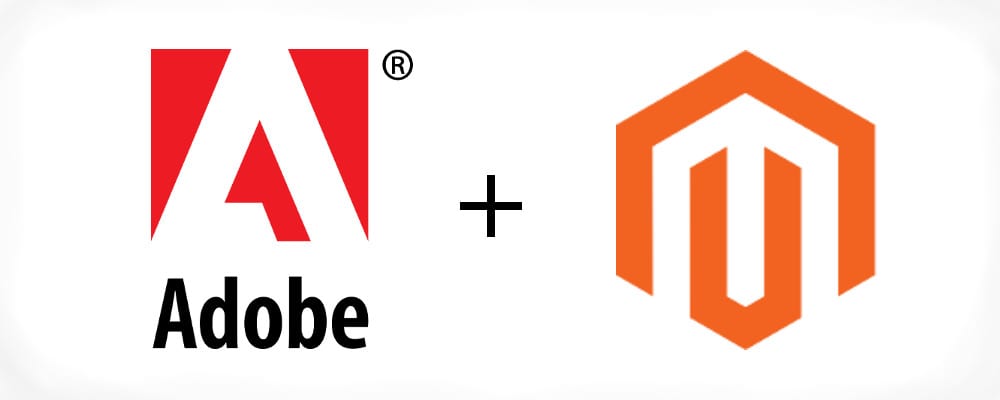Share
Author
George Anderson
Share
Adobe Buys Magento–B2B Questions
The ecommerce world is nothing if not fast-paced. As a Magento shop, we’ve seen the Magento community go through changes before. Now another one is coming. On May 21, Adobe announced their intent to purchase Magento for $1.68B, with the sale set to close in Q3 2018.
Obviously, this is big news for SAP B2B ecommerce. Corevist’s managed, SAP-integrated Magento solution remains the most viable alternative to Hybris for SAP companies. What does this acquisition mean for Corevist clients and for companies considering Corevist?
A lot of this comes down to “wait and see”—it’s far too early to have definitive answers. However, I can give you Corevist’s stance on this acquisition. I’ll frame it in terms of 6 Strategic Planning Assumptions—educated guesses that we’re working with as the Magento acquisition unfolds.
Assumption 1 – Adobe Bought Magento to Compete in the High End Commerce Market
We have no doubt that Adobe acquired Magento to get into the higher-end ecommerce market. Magento already offers stiff competition against SAP Hybris, Oracle Commerce, and Salesforce (CloudCraze and Demandware). While Adobe has long led in digital experience, they’ve largely missed out on the lucrative enterprise ecommerce market. The acquisition of Magento makes total sense in that context.
As Adobe begins to compete with SAP, Oracle, and Salesforce in ecommerce, the pull on these higher end systems to go down-market won’t necessarily result in lower Magento licensing costs. Rather, as Adobe buys products like Magento to fill out their suite, they’re adding cost to those platforms. That means unless the market is drastically larger than anyone really understands, Adobe will have to recoup some of those investments. That’s why they stay at a high end and charge a premium.
The takeaway: As Adobe enters the higher-end market with Magento, expect costs to reflect Adobe’s strategy.
Assumption 2 – Adobe Wants to Compete with Shopify on the Low End of the Market
Shopify typically caters to the lower end of the market, i.e. small business B2C ecommerce. Magento has a presence in that market, although they have aggressively pursued the enterprise market (particularly B2B) in recent years. And while we believe Adobe bought Magento primarily to go after the enterprise market, it’s worth noting that Shopify stock fell 4% after the announcement of the acquisition.
What does that mean for Corevist, our clients, and those considering our managed Magento solution integrated to SAP?
The acquisition’s effect on the lower end of the market has very little impact on Corevist. Our clients are typically B2B manufacturers running SAP ERP. We typically don’t compete with Shopify.
The takeaway: Adobe is looking to take a big piece of the commerce pie, from small business all the way up to enterprise.
Assumption 3 – Adobe Will Innovate with Richer Commerce Functionality
Our clients and prospects tend to be fast followers in terms of their demands for ecommerce functionality. Our clients often start with an SAP-integrated B2B ordering portal that allows SKU entry but doesn’t include a catalog or rich content.
Adobe is all about creating a rich digital experience. In that regard, we welcome the acquisition. As Adobe builds out rich ecommerce functionality, particularly for B2B, our clients and prospects will get a more concrete roadmap to go from entry-level B2B ecommerce (a simple ordering portal) to full-blown rich content, selling direct to consumer, and more.
The takeaway: Adobe’s acquisition points toward continuing innovation in ecommerce functionality, particularly for B2B.
Assumption 4 – Adobe Will Most Likely Keep Community Edition Alive
As of now, Magento is available in two flavors:
- Open Source (formerly Magento Community)—an open source edition, free to download and install, maintained by a vibrant ecosystem of developers.
- Commerce (formerly Enterprise)—a more robust edition with paid licensing, intended for large corporations.
Given what we believe to be Adobe’s goal in acquiring Magento (going after the enterprise commerce market), it’s entirely possible that Adobe would sunset Magento Community Edition.
However, that’s unlikely. As Adobe explains on their blog: “Open source is in our DNA. We know that the key to getting value from open source is by giving value through contribution to and collaboration with these active developer communities. We’re excited to do much, much more with Magento.”
It looks like Adobe is ready to foster the innovative community spirit that has driven the Magento ecosystem for years. For SAP B2B manufacturers looking to do ecommerce, that’s great news—because Community Edition is a great value when integrated to SAP with Corevist Commerce.
The takeaway: As of now, Adobe promises to support open source ecommerce developer communities.
Assumption 5 – Adobe May Not Complete a Seamless Integration with Magento
As Dries Buytaert explains on his blog, there’s currently quite a bit of overlap between Adobe and Magento, including “content editing, content workflows, page building, user management, search engine optimization, theming, and much more.”
How will Adobe handle this overlap?
Right now, we don’t know. There are two basic paths Adobe can take to deal with this:
- Put Adobe’s existing integrated system first and merge Magento into it.
- Put Magento first and rebuild some of Adobe’s current offering to integrate to Magento.
The takeaway: We don’t know how Adobe will choose to handle the integration of Magento with its existing products.
Assumption 6 – Corevist Will Continue to Support Both Versions of Magento
Given our belief that Adobe wants the enterprise commerce market, and given Adobe’s comments on their blog about their commitment to open source, we believe Adobe will continue both versions of Magento.
To that end, Corevist will continue to support both Magento Commerce and Community Edition.
We support both editions because not all SAP B2B companies have the same needs when it comes to ecommerce functionality. In fact, the one need that SAP manufacturers have in common is SAP integration. That’s our bread and butter. As Adobe moves into the growing B2B ecommerce market through the Magento acquisition, they’ll encounter roughly 30% of that market that’s running SAP ERP and needs real-time integration when it comes to ecommerce.
That’s where we come in.
As the premier company integrating ecommerce to SAP, Corevist will continue to serve the needs of SAP manufacturers.
The takeaway: Corevist Commerce will continue to integrate both versions of Magento to SAP.
Final thoughts
What does the Corevist team think of Adobe’s acquisition?
We love it!
We love the potential roadmap for SAP manufacturers to achieve richer functionality without having to get off Magento. We wish Adobe and Magento all the best in finalizing the integration of their platforms (and we hope they do it quickly 😊). And at the end of the day, we’ll continue to support both versions of Magento.
Moving forward: Case study
Curious what a Magento-SAP integration can do for B2B manufacturers? Download this case study on PARI Respiratory. The 106-year-old company launched Corevist Commerce with a Magento storefront fully integrated to SAP—and managed to please all stakeholders in the process.
Download the case study
[want_more title=”Learn more” subtitle=”Case study: PARI Respiratory” description=”Learn how PARI launched ecommerce that posts orders to SAP in real time.” button_text=”Download Now” button_link=”/” button_class=”btn btn-primary pari-case-study” title2=”See it for yourself” subtitle2=”Talk to us” description2=”Curious what Corevist Commerce can do for you? Let us show you a personalized demo. You’ll see ecommerce with real-time SAP data.” button_text2=”Schedule Demo” button_link2=”https://www.corevist.com/demo/” button_class2=”demo-popup”]









